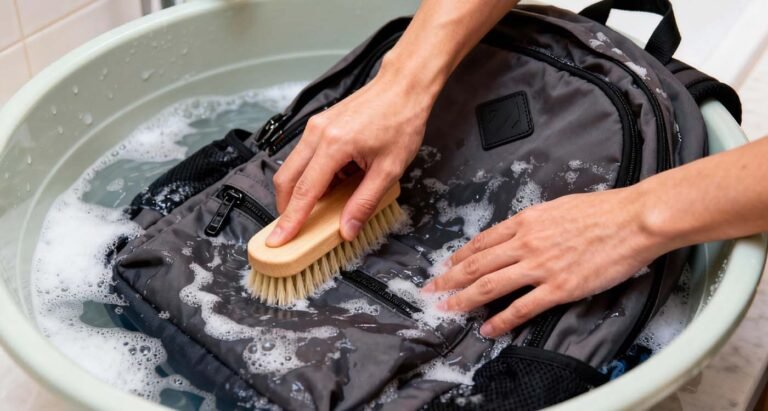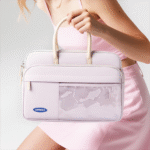0
Buying Guide for Laptop Bags — Choose the Best Bag for How You Move
Consider your commute and what you carry when choosing a laptop bag. This guide matches bags to your mode of transport and offers practical packing, security, and care tips so your next purchase actually fits your life.
Start with purpose: match the bag to your routine
Not every laptop bag is interchangeable. Ask: How do I get to work or meetings?
- Cyclists & e-scooter riders
Prioritize a slim, ergonomic backpack with a ventilated back panel, sternum strap, and reflective accents. A separate shoe compartment or wet pocket helps if you change at the office. Look for lockable zippers and water-resistant fabric when you need to leave the bag against a desk. - Train & subway commuters
Choose a streamlined profile that won’t get snagged in crowds, with quick-access front pockets for transit cards and headphones. A lay-flat laptop compartment makes using tray tables or work surfaces easy. In busy stations, anti-theft features (hidden back pocket, lockable zips) are smart. - Frequent flyers
A TSA-friendly bag with a lay-flat panel, trolley sleeve, and a dedicated charger pocket speeds security checks and gate transfers. Slim backpacks or lightweight structured totes that fit under seats and in overhead bins are best. - Drivers
A convertible messenger or tote that fits under a car seat and keeps documents flat is convenient. Quick-access pockets and comfortable straps still help if you walk from a parking spot to the office. - Hybrid days
If your day mixes modes, choose a convertible bag (tote ↔ backpack) or a refined backpack with a detachable strap for maximum flexibility.

Fit matters more than the labeled size
Don’t buy only by diagonal screen size (13″, 15″, 16″). Check internal sleeve dimensions and account for any case you keep on the laptop.
Practical steps:
- Measure your laptop’s width, height, and depth (include charger if attached).
- Allow 0.3–0.6 in (8–15 mm) clearance on each side for padding and easy insertion.
- Test-fit any external batteries or drives you carry regularly.
Protection features that actually matter
- Cradle-style padded sleeve — dense neoprene or thick foam absorbs shocks.
- Reinforced base — protects against impact when you set the bag down.
- Water resistance — DWR coating or coated fabric guards electronics from rain and spills.
- Internal organization — cable roll, pen loops, and zip pockets keep small items from shifting and scratching.
- Heat management — breathable fabrics reduce heat buildup if you store a warm laptop.

Comfort & ergonomics — protect your body
Overloading a laptop bag causes shoulder, neck, and back strain. Look for:
- Padded shoulder straps (≥1 in / 2.5 cm thick) and a sternum strap for balanced weight.
- Hip belt if you routinely carry 8–10+ lbs (3.5–4.5 kg).
- Curved, adjustable straps that avoid neck pressure.
- Ventilated back panel with channeling to reduce sweat on warm commutes.
- Balanced packing: heavy items (laptop, power bank) against the back panel; light items (notebook, snacks) toward the front.
Quick in-store test: load the bag with a laptop and a few books, wear it for five minutes — if it pulls you forward or strains your shoulders, try another model.
Security & privacy — small features, big peace of mind
- Hidden rear pocket for passport or spare cash.
- Slash-resistant panels and lockable zippers in high-risk areas.
- RFID sleeve for cards if you commute in crowded places.
- Device tracking: tuck a small Bluetooth tracker into a secret pocket to help locate a lost bag.

Materials & durability — pick for your lifestyle
- High-density nylon / coated canvas: lightweight, weatherproof, and easy to clean — ideal for commuters and parents.
- Premium PU / vegan leather: office-friendly finish with lower maintenance than genuine leather.
- Genuine leather: classic, durable, heavier and requires care.
- Recycled fabrics: eco-friendly option — check abrasion resistance and warranty.
Look for reinforced stitching at stress points, YKK zippers, and repair/warranty options to extend lifespan and lower total cost of ownership.
Smart packing checklist for everyday use
Carry the essentials without turning your laptop bag into a locker:
- Laptop in padded sleeve
- Slim charger and short USB-C PD cable
- Compact power bank (outer pocket for security checks)
- Cable roll with USB-C, Lightning, and common dongles
- Notebook or slim folio for notes/receipts
- Wallet, keys, transit card in a quick-access pocket
- Reusable water bottle (side pocket; insulated if needed)
- Microfiber cloth and screen cleaner
Tip: use a small internal organizer pouch for AirPods, dongles, and pens — it prevents scratching and reduces noise.

Maintenance & long-term care
- Wipe water-resistant fabrics with a damp cloth and mild soap; air dry.
- Condition leather sparingly, following the brand’s guidance.
- Reapply DWR spray annually if you live in wet climates.
- Repair small tears and loose seams promptly; many brands offer repair services.
Final checklist — verify before you buy
- Internal sleeve dimensions match your laptop (with case).
- Bag style suits your commute (bike, train, plane, car).
- Protection, water resistance, and organization match your routine.
- Test the bag loaded for comfort (straps, back panel).
- Confirm warranty and repair options.






